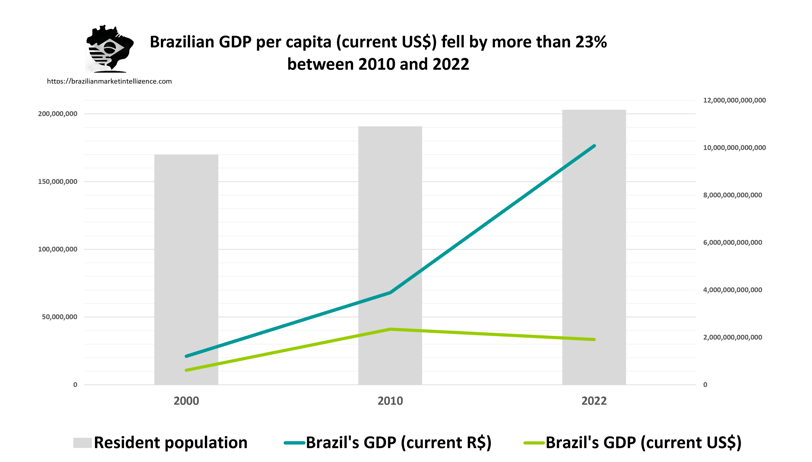The Economic Paradox of Brazil: Growth vs. Currency Depreciation
From 2000 to 2022, Brazil's economic production showcased impressive growth statistics, indicating a robust performance in terms of output and productivity. However, an analysis of this growth reveals a paradox when viewed through the lens of currency valuation. While Brazil’s domestic production figures indicate progress, the experience of the average Brazilian citizen has been markedly different, especially when examining the Gross Domestic Product (GDP) per capita in U.S. dollars.
Angelo Mattioli Neto
7/16/20241 min ler


Introduction to Brazil's Economic Landscape
From 2000 to 2022, Brazil's economic production showcased impressive growth statistics, indicating a robust performance in terms of output and productivity. However, an analysis of this growth reveals a paradox when viewed through the lens of currency valuation. While Brazil’s domestic production figures indicate progress, the experience of the average Brazilian citizen has been markedly different, especially when examining the Gross Domestic Product (GDP) per capita in U.S. dollars.
Impact of Currency Depreciation on GDP Per Capita
Between 2010 and 2022, Brazil experienced a significant decline in GDP per capita when measured in current U.S. dollars. Specifically, the GDP per capita fell by over 23 percent during this period. This decline has been predominantly attributed to the depreciation of the Brazilian real against the American dollar. As the local currency weakened, the purchasing power of Brazilian citizens diminished, reflecting a stark contrast between economic growth and the lived experiences of Brazilians.
Understanding the Broader Economic Effects
The depreciation of the Brazilian currency raises concerns about the sustainability of economic growth. While expansion in production signifies potential for future investment and job creation, the concurrent fall in GDP per capita in dollar terms signals underlying vulnerabilities. For many Brazilians, the benefits of increased production did not translate into tangible improvements in quality of life or purchasing power. This phenomenon serves as a crucial reminder that raw economic growth figures can be misleading without corresponding considerations of currency strength and the purchasing power parity.
